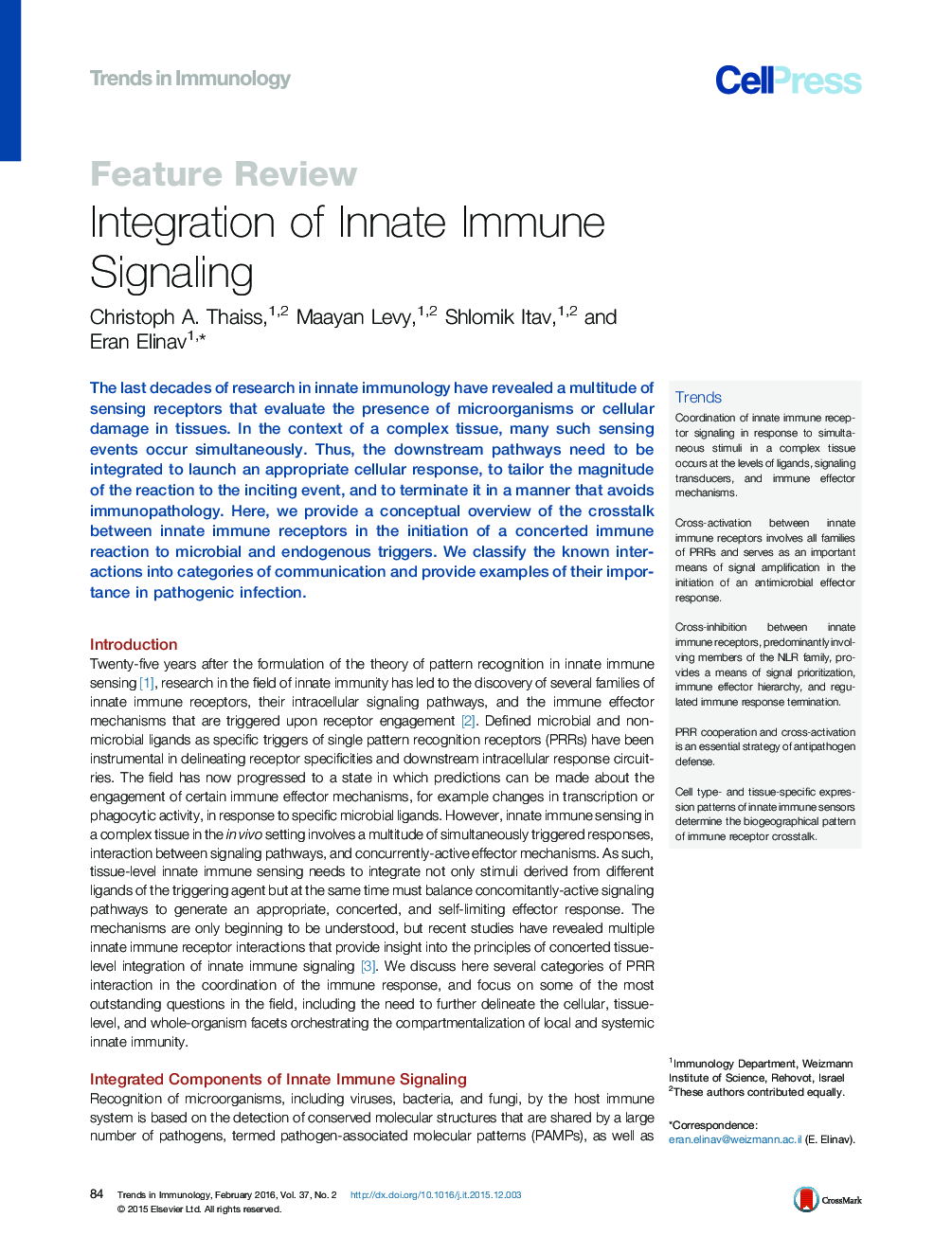| Article ID | Journal | Published Year | Pages | File Type |
|---|---|---|---|---|
| 4359748 | Trends in Immunology | 2016 | 18 Pages |
The last decades of research in innate immunology have revealed a multitude of sensing receptors that evaluate the presence of microorganisms or cellular damage in tissues. In the context of a complex tissue, many such sensing events occur simultaneously. Thus, the downstream pathways need to be integrated to launch an appropriate cellular response, to tailor the magnitude of the reaction to the inciting event, and to terminate it in a manner that avoids immunopathology. Here, we provide a conceptual overview of the crosstalk between innate immune receptors in the initiation of a concerted immune reaction to microbial and endogenous triggers. We classify the known interactions into categories of communication and provide examples of their importance in pathogenic infection.
TrendsCoordination of innate immune receptor signaling in response to simultaneous stimuli in a complex tissue occurs at the levels of ligands, signaling transducers, and immune effector mechanisms.Cross-activation between innate immune receptors involves all families of PRRs and serves as an important means of signal amplification in the initiation of an antimicrobial effector response.Cross-inhibition between innate immune receptors, predominantly involving members of the NLR family, provides a means of signal prioritization, immune effector hierarchy, and regulated immune response termination.PRR cooperation and cross-activation is an essential strategy of antipathogen defense.Cell type- and tissue-specific expression patterns of innate immune sensors determine the biogeographical pattern of immune receptor crosstalk.
